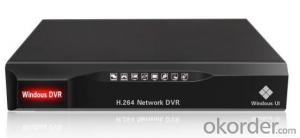Standalone Solar Inverter
Standalone Solar Inverter Related Searches
100w Solar Panel With Inverter Best Solar Panel Inverter 5000 Series Cast Aluminum Plate Portable Solar Panel Inverter First Solar Series 6 Module 12 Volt Solar Panel Inverter Plastic Solar Lanterns Buy Solar Panel Inverter Solar Panel Inverter Cost Solar Panel Without InverterHot Searches
Type Of Inverter For Solar Types Of Inverter For Solar Used Solar Inverter For Sale Inverter Size For Solar System Solar Edge Inverter For Sale 5kw Solar Inverter For Sale Solar Inverter For Sale Solar Inverter For Battery Solar Inverter For Split Ac Solar Inverter For Laptop Solar Inverter For Fridge Solar With Inverter Price Solar Inverter With 2 Battery Solar Inverter Price In China Best Solar Inverter In China Solar Inverter Price In Dubai Solar Inverter Price In Uae Solar Inverter Price In Kenya Solar Inverter Price In Kerala Solar Hot Water Collectors For SaleStandalone Solar Inverter Supplier & Manufacturer from China
Okorder.com is a professional Standalone Solar Inverter supplier & manufacturer, offers integrated one-stop services including real-time quoting and online cargo tracking. We are funded by CNBM Group, a Fortune 500 enterprise and the largest Standalone Solar Inverter firm in China.Hot Products
FAQ
- A solar inverter handles low light conditions by intelligently adjusting its operating parameters to maximize power output from the available sunlight. It may use techniques such as maximum power point tracking to optimize energy conversion efficiency and ensure that even in low light conditions, the solar panels are generating the maximum power possible.
- Yes, a solar inverter can be used in systems with multiple inverters. In fact, in large-scale solar installations, multiple inverters are often used to handle the increased power output. These inverters are connected in parallel or series to ensure efficient and reliable operation of the entire system.
- The role of fault ride-through capability in a solar inverter is to ensure the uninterrupted operation of the inverter during grid faults or disturbances. It allows the inverter to remain connected to the grid and continue generating power, even in the presence of temporary voltage dips or interruptions. This capability is essential for grid stability and reliability, as it helps prevent power outages and disruptions in the event of faults in the grid.
- No, a solar inverter cannot be used with different types of batteries. The compatibility of a solar inverter depends on the specific battery chemistry it is designed to work with. Using an incompatible battery type can lead to inefficient energy conversion and potential damage to both the inverter and the batteries. It is essential to ensure that the solar inverter is compatible with the specific battery type before installation.
- Yes, a solar inverter can be used with a solar-powered vehicle. The solar inverter is responsible for converting the DC power generated by the solar panels into AC power that can be used to power various devices and components in the vehicle, such as the motor, lights, and electronics.
- A solar inverter handles variations in temperature by employing temperature compensation techniques. It continuously monitors the temperature of the solar panels and adjusts its output voltage and frequency accordingly. This helps maintain optimal performance and efficiency, as temperature changes can affect the electrical characteristics of the panels. Additionally, inverters may have built-in cooling systems or heat sinks to dissipate excess heat and prevent any damage caused by high temperatures.
- A solar inverter monitors and optimizes energy production by converting the direct current (DC) generated by solar panels into alternating current (AC) that can be used to power electrical devices. It constantly monitors the voltage and current of the solar panels to ensure optimal performance and adjusts the conversion process accordingly. Additionally, advanced solar inverters often incorporate maximum power point tracking (MPPT) technology, which enables them to track the maximum power output of the solar panels and adjust their operating parameters accordingly, maximizing energy production. This monitoring and optimization process helps to ensure efficient and effective utilization of solar energy.















































